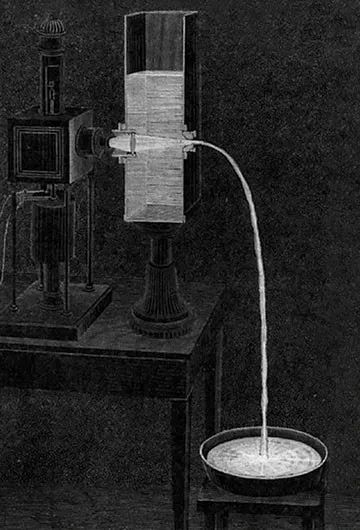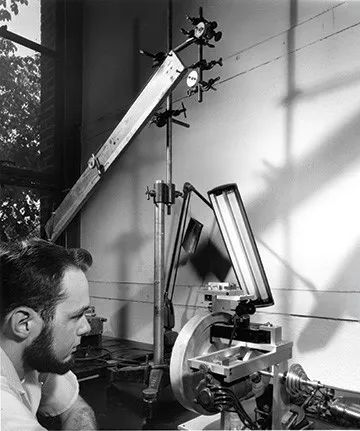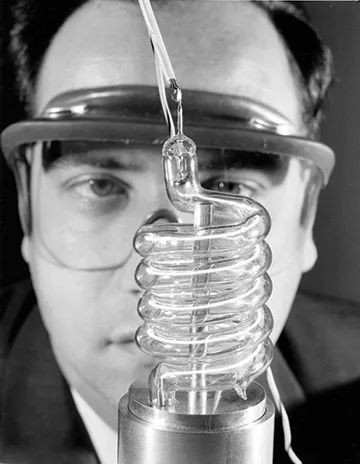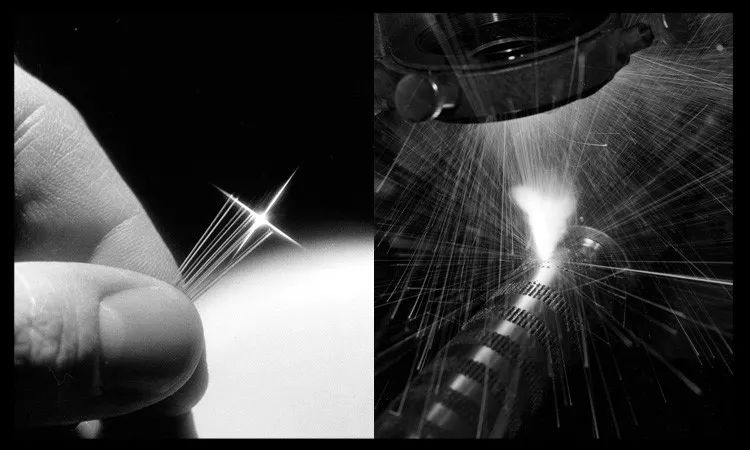The Birth of Laser and Optical Fiber Ⅰ
(Click 730 )Menlaser is a professional laser cutting system solution service provider.We provide Medical laser tube cutting,laser tube cutting for medical,medical precision laser tube cutting,medical tube cutting machine,medical device laser tube cutting,medical precision laser tube cutting,medical tube laser cutting, Let’s introduce the knowledge of Laser and Optical Fiber.
Laser and Optical Fiber Introduction
Since the 1950s, an optical revolution has taken place in the field of science and technology. The birth of lasers and optical fibers has brought revolutionary breakthroughs. In fact, the birth of lasers and optical fibers is also the scope of the first quantum revolution, because the development of these technologies is based on the observation and application of quantum laws. This article is from the first issue of OPTICA New Year. The original title is “Two Breakthroughs in the Optical Revolution”. The core point of this article is that the development of information technology is not driven by any single breakthrough. This is still of great guiding significance for opening the second quantum revolution today. Unlike the first quantum revolution, the second quantum revolution is the active regulation and manipulation of quantum states by human beings, thus realizing quantum information technology.
The common history of laser and optical fiber shows that the development of truly revolutionary breakthroughs is similar.
In 1950, optics was a backward field in physics. The Second World War promoted significant progress in spectroscopy and infrared technology, but optics seems to be an unattractive world composed of lenses and optical instruments. When Jay Last graduated from the Institute of Optics of the University of Rochester in 1951, his professor Parker Givens said that this happened in solid-state physics.
Last said: “Optics is necessary, but it is not shocking; and solid-state electronics is creating new things every day.” After his graduation, he moved to California in 1956 and co-founded Fairchild Semiconductor, which puts him at the center of the integrated electronics action in Silicon Valley. There, he will become a member of the semiconductor frontier, which is also one of the few major breakthroughs that constitute the basis of modern information technology, which provides new functions and enhanced performance for machines and products in the era of power industry.
The great breakthrough itself is the product of a series of progress. The first is machine programming, which began with the Jacquard loom invented in 1804 and developed through gear calculator and vacuum tube; The second is semiconductor electronics, which has developed rapidly from transistor to integrated electronics. The reason why these two technologies have made great breakthroughs is that they have the ability to multiply their progress and thus open up huge new possibilities. The jacquard loom weaves the thread repeatedly into exquisite patterns; Today’s software controls the complex operation of rocket launch or climate simulation. Semiconductor electronic technology was originally a miniature version of vacuum tube, but now it has multiplied into a powerful computing machine.
However, programming and integrating electronic products is only part of information technology. If computing machines cannot communicate with each other, their functions are still limited; A global and high-capacity network is needed to transport the huge amount of information they process and produce.
The establishment of such a network is the work of light, which is realized by two other great breakthroughs: laser and optical fiber. The laser provides great control over light, making it monochromatic, and closely focusing on femtosecond in space and time units. The optical fiber guides the light that would otherwise dissipate into the waveguide and transmits it to all parts of the world through hair-like fibers made of almost completely transparent glass.
It is noteworthy that the power of computers and the transmission capacity of optical communication have increased rapidly. Since the 1980s, the growth of the number of transistors on the chip has followed Moore’s law, and has been synchronized with the growth of optical fiber transmission capacity. The development of information technology is not driven by any single breakthrough, but evolved from the complementary combination of four major breakthroughs: software, semiconductor electronics, laser and optical fiber.
Left: Optical fiber, Bell Laboratories, 1976. Right: General Electric’s laser-assisted processing, 1975.
No.1 The middle of the 20th century: optical renaissance
The first shock of optical breakthroughs occurred in the mid-1950s. The first glass-coated optical fiber first appeared in December 1956. In February 1957, a doctor tested a fiber-optic gastroscope in the throat of a patient. Later in the same year, we began to manufacture lasers and demonstrated them for the first time in 1960. Optical fibers can guide light at corners. Laser creates a new form of light: coherent and concentrated in a narrow beam. The old light is white and diffuses in all directions; The new light is strictly controlled in wavelength and direction.

In 1841, the Swiss physicist Jean-Diel Colladon first demonstrated the total internal reflection light guide, aiming light at water flow; In 1884, Nature magazine published his illustration of “fountain of light”.
These two breakthroughs were generated from the new physics at the end of the 19th century and the beginning of the 20th century. The root of optical fiber is the traditional concept of total internal reflection, but the concept of waveguide is derived from Maxwell’s electromagnetic wave theory. The concept of laser generated from stimulated emission was put forward by Einstein in 1916 in the analysis of Max Planck’s radiation law. With the expansion of theoretical and experimental knowledge, as well as the development of technology, optical fiber and laser have gradually matured.
Of course, the history of optical fiber and laser has been told many times. But they are worth studying together again. Looking back, we can certainly point out the milestone achievements: the first glass-clad fiber in 1956, the first laser in 1960, and the first low-loss fiber in 1970. However, the transformation of optics into important science and technology is a series of important progress, which has been made by many people standing on the shoulders of giants in decades.
No. 2 Total internal reflection and optical fiber
Total internal reflection has been known since the early 17th century, but the wave theory can not explain it until the early 19th century. The first practical optical guide is a curved glass rod, which was used at the beginning of the 20th century to illuminate the mouth of dental patients with the light emitted by a heat lamp, which may lead to the idea of binding glass fibers together to transmit images. In 1930, Heinrich Lamm, a German medical student, transmitted a bright image of the filament of an incandescent bulb through a bundle of loose glass fibers. His goal was to create a flexible endoscope to observe the stomach, but he could not go further.
After the Second World War, other people tried to transmit images through loose and bare fiber bundles, but they were hindered by high loss. The first person to propose a solution was Brian O’Brien in 1951. At that time, he was both the president of OSA (now Optica) and the director of the Optical Research Institute of the University of Rochester. With a degree in electrical engineering and physics, O’Brien realized that optical fiber is the optical counterpart of plastic dielectric rods used to transmit radio signals, because both are non-conductive waveguides that conduct electromagnetic waves along their length. He realized that coating optical fiber with materials with lower refractive index can reduce light leakage into the air.
The problem is to find a low refractive index transparent material suitable for cladding. In 1956, Larry Curtiss, an undergraduate student at the University of Michigan in the United States, inserted a glass rod with a high refractive index into a tube with a low refractive index and melted them together. After he pulled out 40 feet of fiber, he could see the light from the furnace through the fiber. His experiment opened the door to practical medical endoscope, which is the early main application of fiber optics.

When Larry Curtiss was a physics student at the University of Michigan in the United States, he had the idea of a practical medical endoscope.
American Optical Company, an American optical manufacturer with innovation in other optical fields, has taken a different path: stacking many thin fiber rods together and then pulling them into rigid molten rods. When the diameter of a single fiber core reached several microns, Will Hicks, who worked in the company, noticed a strange pattern, and his colleague Elias Snitzer identified it as a modal pattern, which fell to single mode. The discovery of single-mode optical fiber transmission later proved to be very important for optical fiber communication.
No. 3 In 1961, the first fiber laser
Experiments in the late 1920s proved the existence of stimulated radiation. Later, in order to find a higher frequency microwave spectroscopy source, Charles Townes discovered how to amplify the stimulated emission. Microwave spectroscopy was his main interest at Columbia University in the United States. In 1951, he had an idea that molecular transition might provide the required high frequency. In 1954, his student James Gordon created the first maser source by separating the excited molecules from the ground-state molecules and guiding the excited molecules into a cavity that resonates at the 24 GHz microwave conversion.
In 1957, Townes turned to making optical masers, which brought different challenges: what luminescent materials to use, how to excite atoms or molecules to the high energy level, and how to design a resonator. Others followed closely, but this issue is a thorny one. Theodore Maiman, like O’Brien, has a degree in engineering and physics. He achieved success by using the white light emitted by commercial photography flash to excite his familiar ruby.

Maiman announced the invention of laser at the press conference on July 7, 1960, making optics the front page of newspapers all over the world. Although the tabloids called it “the ray gun in science fiction”, it was immediately regarded as a breakthrough in generating new light sources. After purchasing the flash shown in the news report and using it to excite the ruby stick, the scientists quickly copied his laser. IBM soon used flash lamps to make lasers from other materials. In December of the same year, Bell Labs demonstrated the first gas and CW laser. In 1961, Snitzer of the American Optics Corporation produced a laser pulse from a glass rod with a neodymium doped core, which was the first fiber laser.
With the increase of new lasers, engineers and scientists seek ways to use them. Early tests showed that lasers can drill holes in diamonds, measure distances and produce nonlinear effects. Among other potential applications, laser beam communication is the most important.

 WhatsApp:
WhatsApp:
 Wechat
Wechat
Laser cutting process of eye lens 2024-04-11
With the increasing demand for vision correction in modern society, glasses, as a common optical instrument for vision correction, play an indispensable role in People's Daily life. Lens processing is a delicate process that requires cutting and punching to complete the manufact…
Ultrafast femtosecond laser technology helps cardiovascular stent manufacturing 2024-04-08
With the soaring incidence of cardiovascular and cerebrovascular diseases, stent implantation has become one of the main methods of surgical treatment. Compared with traditional cutting equipment, medical laser cutting machine not only has good cutting quality, high cutting prec…
Application of laser cutting machine in mobile phone camera module manufacturing 2024-04-04
With the continuous progress of science and technology and the improvement of people's requirements for quality of life, the fields of smart wear, smart home, automotive electronics and mobile phone consumer electronics have been vigorously developed. In these fields, the camera…
Metal laser tube cutting machine for furniture industry to reduce production costs 2024-04-01
The metal laser tube cutting machine can cut and punch various types of metal tube materials such as metal round pipes and square pipes according to the needs of use, and the precision is high and the quality is good. In the current era of diversified and light luxury furniture,…